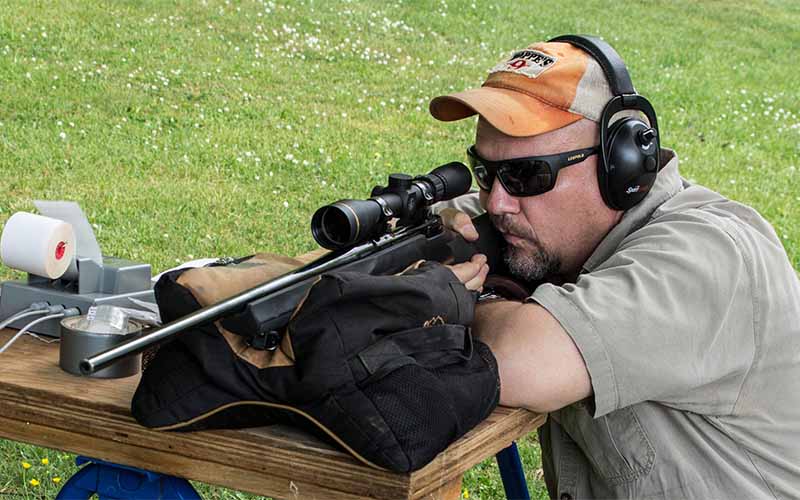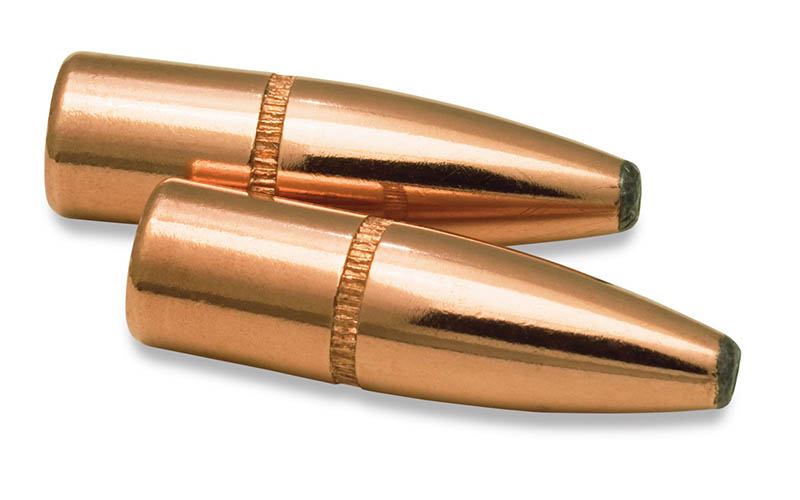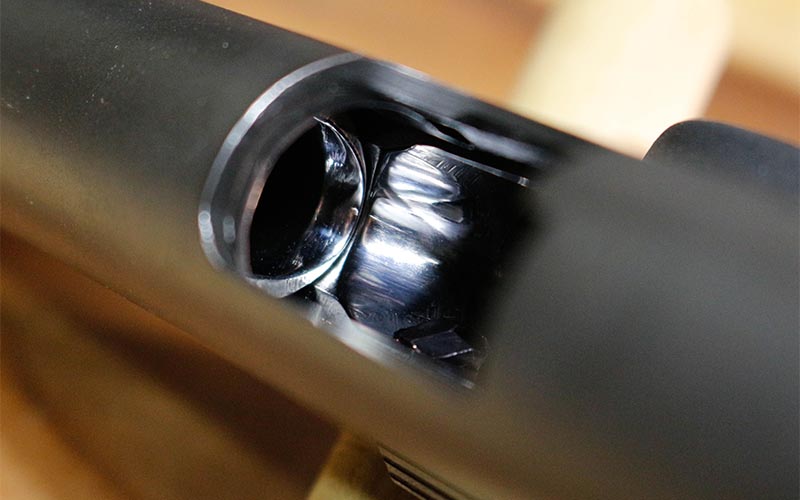
Solutions to common accuracy and reliability problems that often seem inexplicable.
I was sitting at the shooting bench with my shiny new (new to me, anyway) Winchester Model 70 and driven to a new level of frustration. I had purchased the best scope and mounts I could afford, and while they might not have been impressive, they were certainly reliable. The rifle was chambered for .375 Holland & Holland Magnum, and though fully capable of taking any game animal on earth, it doesn’t crush the shoulder. In other words, the rifle, scope and mounts were capable of fine precision—and is sweet-shooting compared to the bigger bores, where recoil gets serious.
I also acquired the best ammunition I could get and did my best to zero the rifle. Once the gun was printing on the bull’s-eye, I settled down to evaluate group size. The rifle would—routinely—print the first shot in the 1-inch bull’s-eye, the second shot 2 to 3 inches up and to the right and the third shot within ¾ inch of the first. I was convinced it was my shooting that was the culprit, so I asked my dad to send some lead downrange to prove me wrong. He had the same results.
Blaming the ammunition, I quickly ordered some reloading dies and necessary components, and I began to develop and handload for the rifle.

Nothing Changed
In fact, some of the loads got worse. Change bullets, change primers, change powder, vary the charge, vary the seating depth—nothing.
It took me swallowing my pride and resorting to calling a professional; Hill Country Rifles actually diagnosed the issue over the phone, and it was the rifle’s bedding that was the culprit. In fact, the particular era of Model 70 I had was notorious for this problem, but I’d have never known it without consulting a qualified gunsmith. That was certainly a learning experience, and I’ve never forgotten it.

Sometimes firearms do things they shouldn’t, or at least things that seem inexplicable. The action of my Winchester was moving ever so slightly in the stock between two spots each time it went into recoil, but the bedding job sorted that out, making it a 1-MOA rifle after surgery. Rifles are more than just cookie-cutter components slapped together.
The Picky Eater
A friend has a 7mm Remington Magnum for which he purchased a couple different premium brands of ammunition. He called me to discuss what could be wrong with his rifle, as he couldn’t keep three shots inside of 5 inches. Action screws were properly tightened, scope and mounts were also, and he had a couple of other rifles at the range that day printing impressive groups, so it—apparently—wasn’t the shooter.
He abandoned the rifle that weekend and went back the following weekend with a well-known but “lesser” brand of ammo. “I don’t understand. This thing just printed a 1-inch group!”
Why would a rifle show such a large difference between brands of ammunition, while others seem to digest anything?

I have another Winchester Model 70 of a similar era to the one I described above, but chambered in .300 Holland & Holland Magnum, which shows such a dislike for the 180-grain bullets I’ve used for so many years in other .300 H&Hs, that I nearly sent the rifle out for an exorcism. It was a box of Nosler ammunition loaded with their 200-grain AccuBond boat-tail bullet that turned the rifle from zero to hero, printing under ¾-MOA repeatedly.
The issue with both of these rifles is a matter of barrel harmonics. When you find the proper harmonics for a particular rifle barrel, it’ll seem like the rifle can do no wrong. But when the harmonics aren’t compatible with the barrel, nothing seems to go right. Accuracy is a simple matter of repeatability, and finding the load that generates the vibrations repeatable in a particular barrel can be a daunting task.

When I started going down the rabbit hole of developing the most accurate handloads possible for my rifles, I found that a variation of 0.2 grain of powder could have a drastic effect on group size. The bearing surface of a particular bullet can definitely play a role, and I’ve seen rifle barrels like bullets with tons of bearing surface—my .300 H&H is one example—and I’ve had rifles that like less bearing surface.
My Ruger .308 Winchester shows a definite preference for 150- and 165-grain bullets, while my Winchester 70 Classic Stainless .300 Winchester Magnum will handle just about anything you feed it.
My point? You can’t tell what kind of harmonics a barrel will like by looking at it, and sometimes it’ll take some experimentation to find the best performance.
In the case of the aforementioned 7mm Remington Magnum, the premium ammunition was by no means at fault. Buying the most expensive ammunition isn’t a guarantee of optimal performance. Brand X’s stellar performance in a buddy’s rifle doesn’t mean that you’ll see the same in yours, nor does it mean that Brand X is necessarily better than Brand Y. I will state that, generally speaking, the premium ammunition is held to higher standards than standard grades, and you’ll find that quite often the projectiles are more consistent and offer a better level of terminal performance.

I’ve also noticed that the faster rifle cartridges seem to amplify the variations in harmonics, so keep that in mind as well. I know ammunition supplies are compromised at best, but as things become available again, find that ammo your rifle likes best and stock up on it. By trying something you might not have considered before, you might find that magic combination.
Choking Hazards
A friend purchased a new autoloading handgun and proudly took it to the range with a couple of boxes that the gunshop salesman recommended. He had, within an hour, proclaimed that his new purchase was a “pile of crap;” it had jammed, failed to feed and completely frustrated him.

It wasn’t that the gun was no good, but it was a common problem: the pistol’s feed ramp. Loading a cartridge from a magazine into the chamber of a rifle or pistol requires a smooth feed ramp at the proper angle for the cartridge being used—and there are times where a flat-point bullet won’t feed properly, but a round-nosed bullet will. In those instances where a gunsmith has taken the time and effort to hand-polish a feed ramp, the improvement is quickly noticed. I’ve seen a finicky handgun that had issues feeding flat-point bullets feed wadcutters after the feed ramp was “tuned,” if you will.
Your handgun—especially your defensive handgun—needs to feed reliably each and every time. Not all guns are created equal, but with a bit of attention from a pair of competent hands, you can take your handgun to new performance levels.
Proper Hygiene
Two days before the deer season opener—when everybody and their brother is sighting in their hunting rifles—I had a buddy stop by my house in a complete panic. His Savage rifle wouldn’t chamber a cartridge properly: He couldn’t close the bolt and had no idea why.
Taking a quick look, I noticed that the rifle was relatively new and that much of the rust-preventative goo was still visible around the receiver. He admitted he hadn’t cleaned the rifle well, and I immediately grabbed the jar of Hoppe’s No. 9, a cleaning rod and a nylon cleaning brush. A bit of elbow grease and some dirty patches quickly sorted the chamber problem, and I then set to work on the barrel. This got me thinking about how dirty barrels, chambers and actions have been such an issue over the years.

The traditional jacketed bullet is probably the cleanest of the bullet designs yet can deposit enough copper jacket material to affect accuracy. Let it go too far and you can see a degradation of accuracy, as well as an increase in pressures generated. Lead bullets, while wonderfully affordable and easy to work with, can definitely foul a barrel to the point where things will go awry. And the lead-free monometal bullets can surely deposit enough copper alloy in the bore to cause accuracy and pressure issues.
I’m admittedly guilty of not cleaning my rifles and handguns as much as I should, but I’ve also seen some guns that were an absolute mess in the bore department. A dirty bore can explain a bunch of mysterious performance issues, and while I’m not going to advocate the ritualistic scrubbing of your barrel each and every time you shoot the gun, I’ll advise you not to let it go too far. Many of my African hunting friends like to “shoot the bore clean,” meaning they don’t clean at all, but that’s a bit much for me.
I’ve also seen an overly oiled bore cause a bullet to fly 6 inches high. I was on a safari in Zimbabwe after Cape buffalo with my then-new Heym Model 89B double rifle in .470 Nitro Express. I’d spent considerable time developing a handload for the gun, and it was printing a pair of shots (one from each barrel) in a group just under 2 inches at 100 yards.

We checked the rifles on the first morning of the hunt, and I was crushed when I heard my professional hunter tell me the two shots were 5 inches apart and equally high of the bull’s-eye. It then dawned on me that I’d cleaned and oiled the barrels and the bore for the trip across the pond. That resulted in higher pressures and erratic accuracy. Once I’d fouled the bore and shot the oil out of it, the next two shots performed just as they had at home.
Cleanliness is important, but there can be too much of a good thing. I like to clean my rifle in the off-season and shoot it just before the hunt, leaving a bit of fouling in the bore for optimum field performance.
Just Calm Down!
Another question I often field is why boat-tail bullets don’t give the same level of accuracy as flat-base bullets. This isn’t uncommon, especially when comparing groups that were fired at a 100-yard target.
Assuming that the rifle has no other issues, boat-tail bullets will show their advantages outside of 250 or 300 yards, as they’ll take longer to “settle down” than a flat-base bullet. Think of it as a spinning top; you start the top spinning and it appears to wobble slightly, then it settles into a near perfectly concentric rotation.
It’s not uncommon to see the boat-tail bullets print a tighter group—when measured in minutes of angle—at 300 yards than they do at 100 yards. While this difference might not be enough to ward a hunter off using boat-tail bullets at woods distances, it’s true that a boat-tail bullet shows almost no advantage inside of 250 yards. And, as some bullet companies will point out, a flat-base bullet is a perfectly viable choice for common hunting distances.

Should the crown of your rifle’s barrel have even the slightest imperfection, you may find the rifle shows a definite preference for flat-base bullets. I have a .22-250 Remington in a Ruger Model 77 that could probably benefit from being re-crowned, as the rifle simply loves the 53-grain Sierra MatchKing flat-base bullet, but it struggles with many of the boat-tail bullets. While I should have the barrel’s crown reworked, the gun does everything I want it to with that Sierra bullet. But if you see issues with boat-tail bullets, have your gunsmith take a good look at your rifle’s crown.
I’ve seen many shooters send dozens of bullets downrange in search of zero, constantly making riflescope adjustments as the point of impact shifts up and down, left and right, with little success.
Let’s all agree that, while riflescopes are better than they’ve ever been, not all riflescopes are created equal. The most common adjustments will read “one click ¼-MOA” or “one click ¼ at 100 yards,” but when put into practical application, that’s anything but true. The adjustment springs of lesser riflescopes might not give ¼-MOA movement, and I’ve struggled with scopes that move closer to ½ MOA … and others closer to 1/8 MOA.

The financial savings of a cheaper scope with weaker springs can quickly be offset by the cost of the ammunition spent chasing zero, so I’ve personally made a definite shift to more dependable optics, and that generally means spending more money. Proper, reliable reticle adjustment is paramount for the target shooter who enjoys shooting at longer ranges and for those hunters who prefer to dial for their elevation adjustments.
The best rifle in the world is useless if the aiming system won’t hold zero or take adjustment properly. As with any piece of gear, I recommend you purchase the best riflescope you can afford. Structural stability, clarity of image and confidence in adjustment will not only save ammunition, but it’s very comforting to dial for a 2-MOA adjustment and see exactly that movement on the target.
Editor's Note: This article originally appeared in the February 2022 issue of Gun Digest the Magazine.
More On Long-Range Shooting:
- Mils vs. MOA: Which Is The Best Long-Range Language?
- Buying the Perfect Precision Scope
- Shooting Positions: Variety Is The Spice Of Life
- Riflescope Tracking: Why It’s Crucial To Test It
- Long-Range Shooting: Becoming Your Own Spotter

Next Step: Get your FREE Printable Target Pack
Enhance your shooting precision with our 62 MOA Targets, perfect for rifles and handguns. Crafted in collaboration with Storm Tactical for accuracy and versatility.
Subscribe to the Gun Digest email newsletter and get your downloadable target pack sent straight to your inbox. Stay updated with the latest firearms info in the industry.

![Best Concealed Carry Guns In 2025 [Field Tested] Wilson Combat EDC X9S 1](https://gundigest.com/wp-content/uploads/Wilson-Combat-EDC-X9S-1-324x160.jpg)


![Best 9mm Carbine: Affordable PCCs [Tested] Ruger Carbine Shooting](https://gundigest.com/wp-content/uploads/Ruger-Carbine-Shooting-100x70.jpg)
![Best AR-15: Top Options Available Today [Field Tested] Harrington and Richardson PSA XM177E2 feature](https://gundigest.com/wp-content/uploads/Harrington-and-Richardson-PSA-XM177E2-feature-100x70.jpg)
